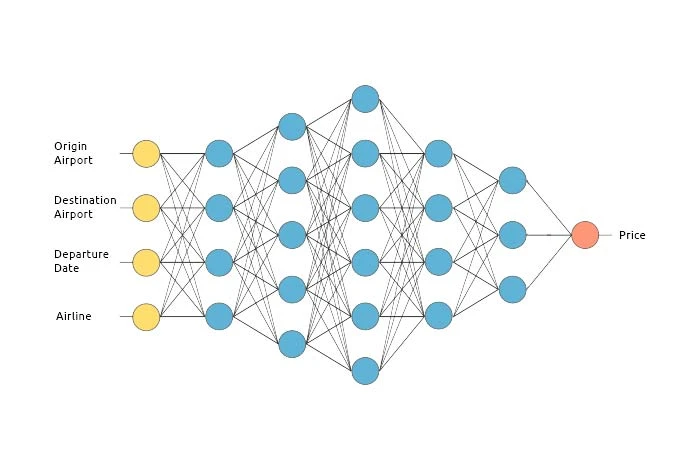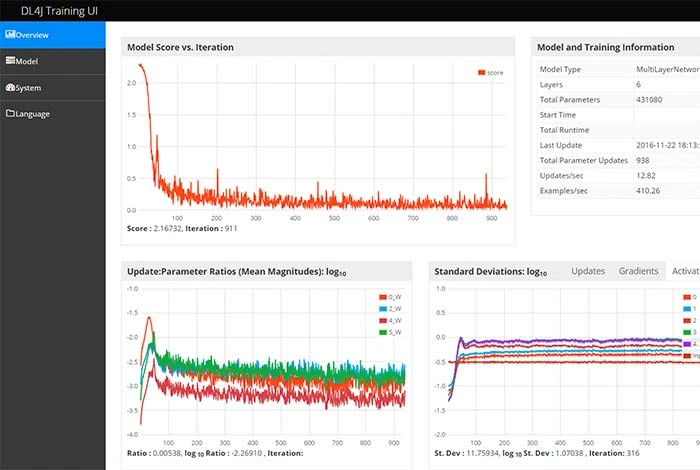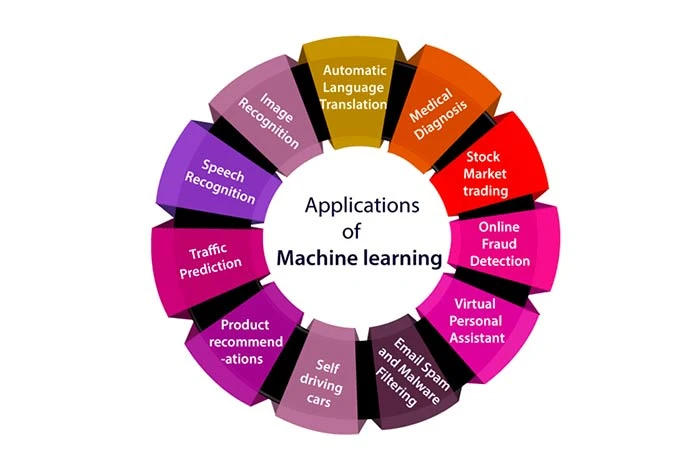Summary: Deep learning tools are used in various industries to create models that can perform tasks just like humans such as movie recommendation, image coloring, driving, etc. Find out more about these tools and their usage in the article below!
Deep learning has gained prominence due to its ability to help users identify complicated patterns in unstructured data sets and provide valuable insights. Business can create deep learning models comprising artificial neural framework to easily learn from different data sets and understand their patterns.
With a deep learning tool, you can train different types of deep learning models to interpret big data sets and convert them into useful information just like humans. Get more insights on deep learning and its tools in the article below!
What is Deep Learning?

Deep learning is a subset of artificial intelligence used to train computers to process and analyze data just like the human brain. Deep learning models are created that can easily identify any type of complicated patterns present in unstructured data sets such as text, images, sounds, etc.
Algorithms of deep learning are modeled just like interconnected neurons in human brain. Deep learning neural networks process information just like a human brain and help detect complex patterns and solve difficult problems.
How Does Deep Learning Work?

Deep learning works on various algorithms which are called artificial neural networks. All these networks are developed and trained similarly like a human brain to process data. Just like the interconnected neurons in the human brain, artificial neural networks comprise multi-layer artificial neurons inside a computer.
These neurons are called nodes that utilize mathematical calculations for processing data inputs and providing relevant output. Each layer present in the network has a number of neurons that receive the data input and compute it.
After that, the generated output is forwarded to the next layer till it reaches the last layer to deliver the final output. Generally, only the first layer is visible and the rest of them remain completely hidden in the deep learning tool.
List of 8 Deep Learning Tools in 2025
There are several deep learning tools that you can use for developing and deploying models for different use cases. Some of the best deep learning tools in 2025 that you can use for this purpose are:
TensorFlow

TensorFlow is an end-to-end machine learning software that helps you with data automation, model tracking and retraining, performance monitoring, and so on. With it, you can create ML models that can be easily deployed in any environment.
This deep learning tool offers features like model analysis, model training tracker, model running in production stage, model customization, etc.
Features of TensorFlow
- Processes and loads different data sets via tools
- Provides Simple ML for training and exporting deep learning models
- Offers tools to evaluate and process different data sets
- Deploys the created models in various environments including on-premises devices
- Delivers scalable data pipelines to load data
- Supports distributed training and immediate model iteration through integration with Keras.
TensorFlow Pricing: It is an open-source deep learning tool.
PyTorch

PyTorch machine learning framework enables you to develop deep learning models which are based on the Python programming language and Torch library.
This end-to-end ML platform can be used for developing models with efficient production, distributed model training, tools and libraries, etc.
PyTorch Features
- Deploys all the PyTorch deep learning models at scale with Torch serve module.
- Supports distributed training of AI models with asynchronous operations execution.
- Provides the option to deploy models on android and iOS operating systems that are written in Python.
- The framework offers tools and libraries to extend PyTorch functionalities
- Supports exporting deep learning models in the ONNX format to get access directly to ONNX compatible runtimes and visualizers.
PyTorch Pricing: Free and open-source deep learning tool
Keras
Keras deep learning API runs on TensorFlow machine learning tool. It has been designed for fast experimentation and deployment of deep learning models. Keras framework can scale itself to large GPUs and TPU pod for model production.
With it, you can manage every workflow of your model production starting from documentation and hyperparameter training to model deployment.
Keras Features
- Created models can run on browser and mobile
- Offers functional API to develop arbitrary layers’ graphs
- Develops models directly from scratch with subclassing
- Offers KerasTuner to choose hyperparameter values for models
- Provides NLP library to help you throughout the model development cycle
- Offers a repository of various modular building blocks to assemble different pipelines
- Shares models directly via web APIs
- You can also ship machine learning based apps directly from it
Pricing of Keras: Keras is an open-source deep learning tool
CNTK

Microsoft Cognitive Toolkit (CNTK) is a toolkit created for commercial grade distributed deep learning. CNTK enables you to club multiple deep learning models including feed forward DNNs and recurrent neural networks to view their performance.
It implements stochastic gradient descent learning for automatic data differentiation and parallelization of several GPUs and servers. CNTK also represents neural networks like nodes through a directed graph.
Features of Microsoft Cognitive Toolkit
- Extracts data from multiple resources
- Automatically understands the data relationship and creates a model
- Assesses the deep learning models and refines them
- Supports multiple networks such as feed forward DNN, RNN, LSTM, etc.
- You can also deploy deep learning models offline from Python
- You can evaluate models from your Java programs.
- Supports Open Neural Network Exchange format for framework interpolarity
Pricing: It is an open source deep learning software
Apache MXNet
Apache MXNet is a deep learning framework that offers building blocks for designing, training, deploying, and validating deep neural networks. Whether you need a library to develop deep learning research or just a robust framework to manage production workload, Apache MXNet is the right choice.
Features of Apache MXNet
- Supports 8 binding languages like Scala, Clojure, Java, R and Perl.
- Offers hybrid front-end to transit between Gluon eager imperative mode and symbolic mode.
- Supports near-linear scaling for improving the hardware performance including multi-GPU or multi-host training.
- Offers multiple tools and libraries to support ML model development, such as GluonCV, GluonNLP, etc.
Apache MXNet Pricing: Open-source deep learning tool
Deeplearning4j

Deeplearning4j is a comprehensive suite of tools to run deep learning on the Java Virtual Machine. It is one of those frameworks that lets users train ML models from Java while also working in conjunction with the python ecosystem via our cpython bindings and model import support.
You can use it for importing and retraining models in Pytorch, TensorFlow, and Keras. With this deep learning tool, you can convert raw input data into tensors to run neural networks.
Features of Deeplearning4j
- Offers Samediff framework for completed complex graphs
- It comes with an Nd4j computing library that completes numpy operations and TensorFlow or PyTorch operations
- Provides Libnd4 c++ library for enabling various math codes on multiple devices.
- Supports Python4j script execution framework to quickly deploy these scripts into ML model production.
- Supports integration with Spark to execute models in Spark.
Pricing of Deeplearning4j: It is an open-source deep learning tool
Torch
Torch deep learning tool is a computing framework that supports machine learning algorithms and high performing GPUs. Torch offers neural network and optimization libraries to easily develop complicated neural networks.
Further, you can develop arbitrary graphs of different neural networks, parallelize them in CPUs and GPUs systematically.
Features of Torch
- Supports neural networks and energy-based modeling
- Provides linear algebra routines to perform operations
- Offers packages for machine learning, signal processing, parallel processing, etc.
- Supports efficient GPU for fast model processing
- Offers numeric optimization for machine learning
- You can connect with android and iOS devices with ports support
Torch Pricing: It is an open-source deep learning tool
H2O

H2O neural network is an open-source deep learning tool for creating and deploying deep learning models. It supports several statistical and machine learning algorithms such as gradient boosted machines and generalized linear models to analyze the input data.
With its AutoML, you can automatically run all the deep learning algorithms and create a complete board of the best models. Further, H2O can extract data directly from HDFS, S3, Azure Data Lake, etc., for quick data processing.
H2O Features
- Supports leading ML algorithms such as GLM, XGBoost, GLRM, etc.
- Works with programming languages like python to develop ML models
- Provides AutoML for automating machine learning workflows
- Easily deploys POJOs and MOJOs for deploying the ML models in any environment
- Supports in-memory processing along with serialization between nodes and clusters for big datasets.
Pricing of H2O: H2O is an open-source deep learning tool
Applications of Deep Learning Tools

Deep learning tools are used in several industries to analyze data sets and provide insights via AI neural networks. Some common uses of deep learning tools are:
- Medical Diagnostics: Many healthcare providers use deep learning tools for disease detection and diagnosis, drug discovery, medical research, etc.
- Video Recommendations: Several OTT platforms such as Netflix and Prime provide movies and series recommendations through a deep learning tool. It studies user interests, watch history, etc., to provide recommendations.
- Music Production: The deep learning model can easily study and learn different notes and patterns of various music genres and produce music
- Automatic Automobile: An automobile is trained through deep learning models to understand the environment and provide instructions to perform specific tasks. Such tasks often include traversing the traffic, identifying the best routes, and speeding up the vehicle.
- Facial Recognition: The tool can be used for facial recognition by using a Convolutional Neural Network model. It will try to match the facial features of an image with the database of millions of images on the internet to identify a person.
- Fake News Detection: Convolutional Neural Networks (CNNs) and Recurrent Neural Networks (RNNs) created through deep learning tool can be used to detect fraud news. These networks work by consolidating data from various authentic sources and juxtaposing them with the given news to validate it.
Conclusion: Which is the Best Deep Learning Tool and Application
Deep learning has become an important aspect of every industry to perform complicated tasks without any human help. By simply creating and training deep learning models, tasks like image coloring, music producing, and pixels restoring can be completed in a short span.
There are several deep learning tools available to create, train, and deploy models. However, based on features, models supported, machine learning workflows automation, etc., TensorFlow, PyTorch, and Deeplearning4j are the best deep learning tools.
FAQs
Which tools are used in deep learning?
There are several tools available that you can use for creating and deploying deep learning models. Some of the top tools include H2O, TensorFlow, Keras, Caffe, DeepLearningKit, etc.
Which are common applications of deep learning?
Deep learning is used in various industries to analyze data and generate predictions via neural networks. Some of the common applications of deep learning include generating music, providing video recommendations, adding subtitles to silent movies, identifying fake news, etc.
What are tools and applications of machine learning?
Some common tools and applications of machine learning are ML Kit, scikit-learn, Google Cloud Platform, etc.
Is deep learning a tool of AI?
Deep learning is a kind of machine learning and a part artificial intelligence that imitates ways human beings gain different types of knowledge. It is an essential aspect of data science that comprises statistics and predictive modeling.
What are deep learning examples?
Deep learning is used in several industries to perform tasks just like humans. For example, OTT platforms can use it to provide video recommendations. Similarly, news channels can use it to detect fake news via various artificial neural networks. The use cases of deep learning differ from industry to industry.
What are deep learning methods?
Deep learning is part of a machine learning algorithm which utilizes several layers to pull out higher-level attributes via the raw input. Some popular methods of deep learning include Classic Neural Networks, Convolutional Neural Networks, Recurrent Neural Networks, etc.
What is deep learning use in AI?
Deep learning is a kind of method used in artificial intelligence which teaches computers to easily process any data like the human brain. Further, deep learning models can easily identify complicated patterns present in different data sets to deliver accurate predictions.
The Techjockey content team is a passionate group of writers and editors dedicated to helping businesses make informed software buying decisions. We have a deep understanding of the Indian software market and the challenges that businesses face when choosing the right software for their needs. We are committed... Read more





























